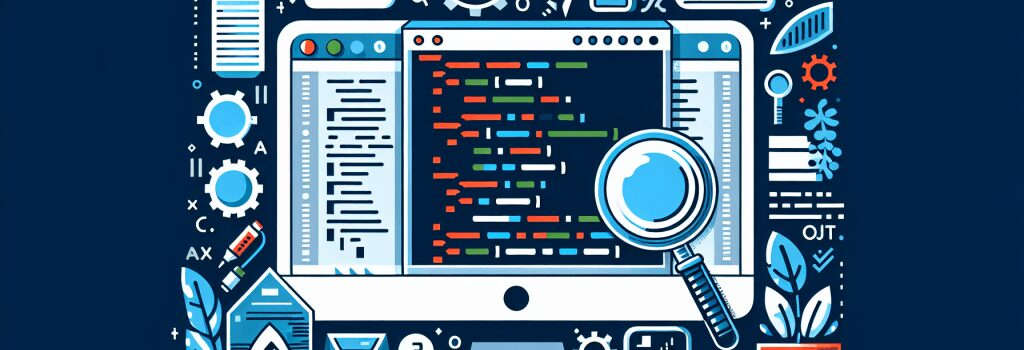JavaScript Debugging: Tools and Techniques to Enhance Your Web Projects

JavaScript Debugging: Tools and Techniques to Enhance Your Web Projects
JavaScript, a cornerstone of modern web development, undeniably powers much of the interactivity and functionality we’ve come to expect on the web. However, with great power comes great responsibility, especially when it comes to ensuring your scripts run smoothly. Debugging your JavaScript code effectively is not just about fixing errors; it’s a vital practice in web development that enhances your projects, leading to a more robust, efficient, and user-friendly experience. In this article, we’ll dive into various tools and techniques that can significantly improve your debugging process.
Understanding JavaScript Debugging
Before diving into the tools and techniques, it’s crucial to understand what JavaScript debugging actually entails. At its core, debugging involves identifying and removing errors or bugs from your code. But it’s more than mere error correction; it’s about understanding the flow of your program and ensuring it aligns with your intended outcomes.
Leveraging the Browser’s Developer Tools
Console.Log for Immediate Feedback
One of the simplest yet most powerful tools at your disposal is the ;console.log()> method. It allows you to output values to the browser’s console, offering immediate feedback on the state of your variables or the flow of your code. While it’s basic, it’s an invaluable first step in the debugging process.
Breakpoints and Step-through Debugging
Modern browsers come equipped with built-in developer tools that offer more advanced debugging capabilities. One of the most effective techniques is using breakpoints. By setting breakpoints in your code, you can pause execution at a specific line, allowing you to inspect the current values of variables, the call stack, and the execution path. This step-through approach gives you a granular look at your code’s behavior, making it easier to pinpoint where things go awry.
Static Analysis Tools
Beyond the immediate debugging in your browser, static analysis tools can scan your code for common errors and potential issues before your script even runs. Tools like ESLint and JSHint allow you to enforce coding standards and catch syntax errors, undeclared variables, and more. It’s a proactive approach to debugging that can save you time and headaches in the long run.
Unit Testing and Test-Driven Development (TDD)
Unit testing involves writing tests for your functions and components to ensure they behave as expected. By adopting Test-Driven Development (TDD), you write tests before your actual code, defining the expected behavior upfront. Frameworks like Jest or Mocha provide the infrastructure to write and run these tests. When combined with debugging, unit tests offer a safety net, catching regressions and errors early in the development process.
Utilizing Source Maps for Minified Code
In production, your JavaScript is often minified and concatenated, making it nearly impossible to debug directly. Source maps solve this problem by mapping the minified code back to your original source files, allowing you to debug in the context of your familiar codebase, even in a production environment.
Conclusion
Mastering JavaScript debugging is a critical skill for any web developer. By leveraging the right tools and techniques, you can dramatically improve the development process, making it more efficient and significantly reducing the frustration associated with bugs. Start simple with ;console.log> and browser developer tools, then gradually incorporate static analysis tools, unit testing, and source maps into your workflow. With practice and persistence, you’ll enhance not just your projects, but your capabilities as a developer, crafting smoother, more reliable web experiences for all users.


